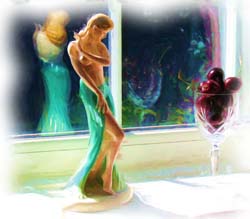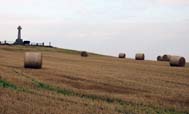The Place Royal stands on the old square of a magnificent palace of the Dukes of Brabant begun in the 13th century. Embellished in 1452 by Philippe le Bon, altered and fitted out by Archduke Albert and Archduchess Isabelle, it was ruined by a fire in 1731, then rebuilt. 40 years later as a rectangular square consisting of eight XVI-style mansions linked by porticos. Saint-Jaques sur Coudnberg, the neoclassical church, dominated in the centre, since 1848, by a statue of Godefroy de Bouillon, King of Jerusalem, setting off on the First Crusade.
The medieval abbey church that originally stood on this location was demolished by command of Charles Alexander of Lorraine during his expansive urban planning projects, despite having escaped the great fire of 1731 that destroyed the nearby Coudenberg Palace. The new church was built in line with rue Montagne de la Cour/Hofberg on its present location at the Place Royale. Construction of the facade was started by architect Gilles-Barnabé Guimard after the designs of Jean-Benoît-Vincent Barré (1775). The first stone was solemnly laid by Charles Alexander of Lorraine on the 12th of February 1776. The portico was finished in 1780. The nave, transept, choir and sacristy were built under supervision of Louis Montoyer in the years 1785-1786. After the consecration of the building it was in use as abbey- and parishchurch at the same time. Moreover it was the official church of the court of the Governors of the Habsburg Netherlands. The present building was designed to serve as the Church of the Abbey of Saint-Jacques on the Coudenberg and therefore has a deep extended choir with place for choir stalls for the monks.
During the French Revolution, the abbey was suspended and the church was made into a Temple of Reason, and then later into a Temple of Law. The church was returned toCatholic control in 1802. On July 21, 1831, Prince Leopold of Saxe-Coburg-Gotha took the oath that made him H.M. Leopold I, the first King of the Belgians, on the front steps of the church. The building lost somewhat of its typical neoclassical temple-like appearance by the addition in the 19th-century of a bell tower (after the design of Tilman-François Suys) and a coloured fresco by Jean Portaels on the pediment.














“During the French Revolution, the abbey was suspended and the church was made into a Temple of Reason, and then later into a Temple of Law.”
Oh dear.
But now it has returned to it’s proper purpose as a house of God
They must have lost a treasure by demolishing the Medieval Church, Cherie
It would be nice to see what that looked like
Oh I have been to this church too
excellent shot. i love the clouds and the light they create
They make it look like it was about to rain. It was actually a lovely warm day